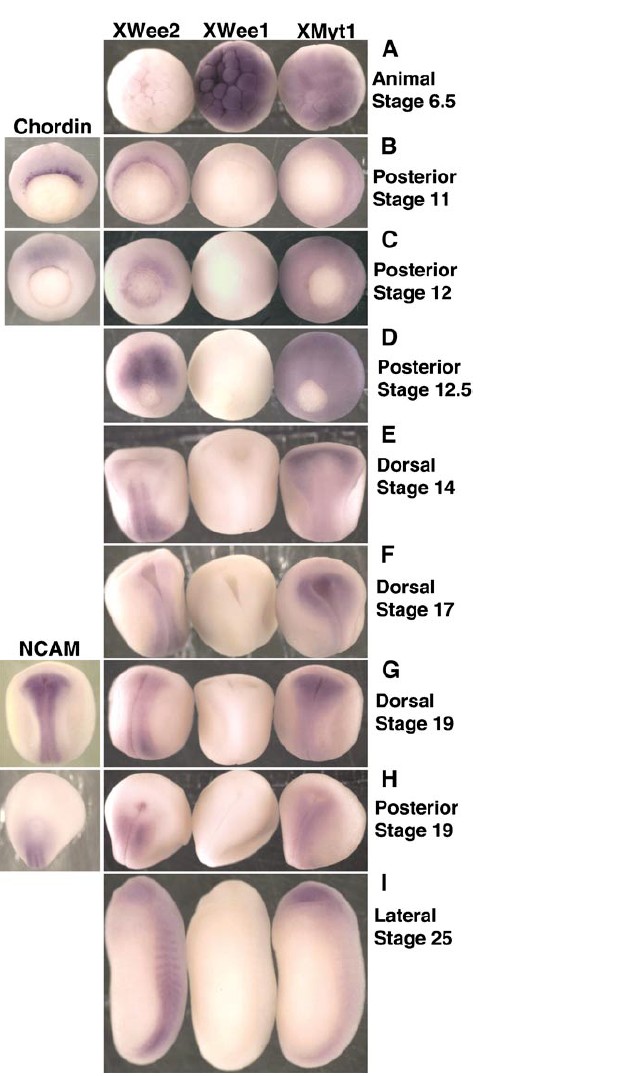XB-IMG-42101
Xenbase Image ID: 42101

|
FIG. 6. Whole-mount in situ hybridization of Xenopus embryos show that each Wee kinase has a specific spatial and temporal developmental profile. Xenopus embryos were staged according to Nieuwkoop and Faber (1994), fixed, and subject to in situ hybridization
for the Wee kinases (XWee2, XWee1, or XMyt1) (Aâ I), the dorsal mesoderm marker Chordin (B, C), or the neural marker NCAM (G, H). View and stages for each embryo are as indicated. See text and Materials and Methods for details. Image published in: Leise W and Mueller PR (2002) Copyright © 2002. Image reproduced with permission of the Publisher, Elsevier B. V.
Image source: Published Larger Image Printer Friendly View |
